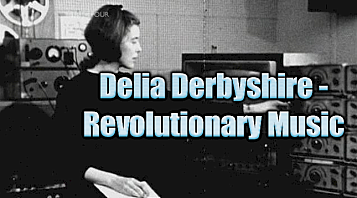Original post is published here
She shares the heartbreak of a girl who is hundreds of miles away
— yes, farther than distance itself, for she lives in the land of make-
believe. But it isn’t make-believe to this lady because, thanks to the
golden tone of her General Electric Radio, every program is close, inti-
mate and personal — an actual visit from the interesting neighbours
on the other side of the dial.
~Anna Friz, The Art of Unstable Radio (2010).
This website is based on the research I conducted while writing my dissertation titled Sonic Cyberfeminism(s): Contemporary Feminist Radio Art, my final project as part of the MLitt in Curatorial Practice (Contemporary Art) at the Glasgow School of Art.
The dissertation has been motivated by a need to address the lack of feminist histories of radio art.[1] While this text does not purport to be a comprehensive analysis of the history of feminist radio art from its beginning until present time, it nevertheless seeks to highlight a chosen era in radio art’s history and map selected feminist radio art practices within this specific timeframe. The period is that of 1990s until present time; the choice of this particular framework was provoked by the question of the influence that the burgeoning digital technologies of the early 1990s have had on “older” analogue media, such as radio. I would like to see the introduction of the concept of cyberspace as a particularly key moment in the development of cultural discourse around old and new media at the time. The development of cybernetics as a field of science likewise has had an enormous impact on feminist thought of the era, influencing the new theorisation of the relationship between gender, body and technology, gathered under an umbrella term of cyberfeminism. While looking at radio art from the 1990s, I strive to discern the impact of cyberfeminist thought on radio art practitioners of the time.
One cannot ignore the fact that, while the Internet as a global communication network has been eventually embraced by (almost) the entire world, the spread of new technologies has not occurred at an equal pace everywhere, and the first-world countries have retained advantage over the rest of the world in that respect. Countries with wide-spread access to Internet and digital technologies can also be seen as hubs of cyberfeminist thought: “Carolyn Guertin (2003) sees cyberfeminism as emerging simultaneously in three different parts of the world: Australia (VNS Matrix), the UK ([Sadie] Plant) and Canada ([Nancy] Paterson),” (Paasonen 2011, 339) while Susanna Paasonen includes Germany as a European outpost of cyberfeminist thought.[2]
The 1990s was a time when alternative radio met the Internet and for a short while these two media seemed to be linked by common interest in creating a space of resistance to dominant mass media culture. One can see this paradigm of radio as a means of a two-way, long-distance communication between different remote stations in light of such events as Horizontal Radio (1995, Ars Electronica, Linz, Austria) or Rivers and Bridges (1996, Ars Electronica), where a global communication system alternative to the Internet was staged with the use of radio, fax and telephone technologies. The tendency to question traditional media through radio art is likewise demonstrated, for example, in the manifesto of convex.tv, a net.radio collective established in Berlin in 1996:
“convex.tv answers the routine public-station statements from the few *to all* and their dismissal as a permanently reconstituting collective form: precisely because radio, in the form of format radio, is utterly in ruins – its public-station antipode still mourning the golden age of culture transmitted top-down – a third space is opening up in the ether.” (Arns 2008, 476)
This “third space” of the Internet opened up a possibility of a non-hierarchical, democratic forum, allowing various underrepresented groups a freedom of expression. This is especially true of the cyberfeminist movement, which saw the Internet as both a tool and a medium which was capable of overturning dominant patriarchal structures governing the media landscape. Feminist scholars Katherine Behar and Silvia Ruzanka argue that: “[n]ostalgia for surfing the web is also nostalgia for the open possibilities of a still undefined terrain – nostalgia for a moment when hierarchies were levelled […]. This was the 1990s Net culture that supported cyberfeminism at its height.” (Way 2016, 194) Paasonen likewise uses a terminology of micro-politics echoing Deleuze and Guattari to describe networked efforts of early cyberfeminism: “Cyberfeminist politics has been scattered and practiced on the micro level in networking, women’s technology workshops, and various other kinds of critical interventions.” (Quoted in Hester 2017, par. 7) The space of alternative or pirate radio and the space of the early Internet culture have therefore provided similar possibilities for artists and activists.
***
[1] See, for example, Anna Friz’s discussion of the absence of female figures in the histories of radio art in her dissertation “The Radio of the Future Redux: Rethinking Transmission through Experiments in Radio Art” (2011), or Ellen Waterman’s chapter “Radio Bodies: Discourse, Performance, Resonance” in Radio Territories (Jensen and LaBelle 2007).
[2] Paasonen draws attention to the fact that cyberfeminist activity has likewise occurred outside of the Western Europe/North American grid, citing an example of Cyber-Femin Club of St. Petersburg (Paasonen 2011, 339). Nevertheless, these histories still play a marginalised role in the wider history of cyberfeminist thought.
